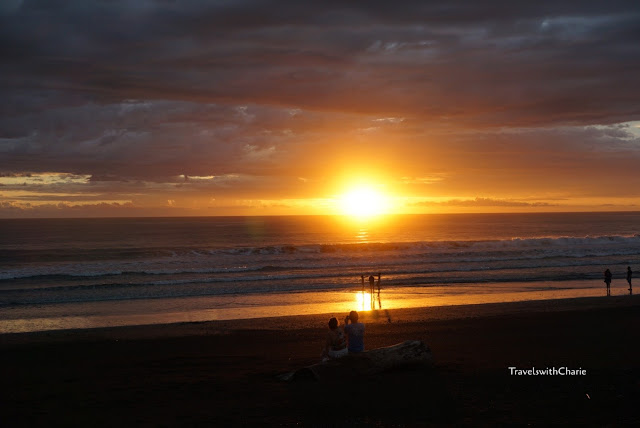Sunset over the Pacific Ocean
This is why people congregate to watch a sunset.
Jaco Beach
Tuning in the blue mind.
Waking up to this, palm trees, blue skies, and vitamin sea.
Iguana
One of the staff members at the hotel told me that there are bigger iguanas in the garden. This is the biggest one I saw. Needless to say, I didn’t stroll in the garden after sunset.At the town plaza, the iconic “I ❤️ Jaco” and Pura Vida signs welcome visitors.
The tourism slogan of Costa Rica
Jaco’s restaurants and shops are clustered along the main highway. You can easily walk from the hotels on the beach to the commercial center of Jaco where you can rent a surfboard, buy souvenirs, arrange sightseeing tours or grab a bite to eat.
Where to stay:
Best Western Jaco Beach
This was the first time I stayed at an all inclusive resort. I liked the fact that I could get three meals a day, enjoy free drinks (yes, cocktails are included) and have a snack at the beachside bar. I was so full I had to skip lunch to make room for dinner. Best Western Jaco is a family resort so there are children around. If you’re looking for a serene vacation, this isn’t the place to stay. There are many activities centered around the swimming pool including morning exercises and the music can be heard in the rooms surrounding the pool. But you can always get a lounge chair and sit on the beach, away from all the hubbub and relax with a drink or two.
How to get there:
I took Tico Shuttle from Escazu to Jaco which is about an hour and a half ride. My driver was careful and drove safely at all times. He wore a mask as I did. I had the van to myself as a solo passenger. I highly recommend Tico Shuttle for transfers in and around Costa Rica. ticoshuttle.com
There are also public buses that go to Jaco from the San Jose Bus Terminal.
Images by TravelswithCharie






